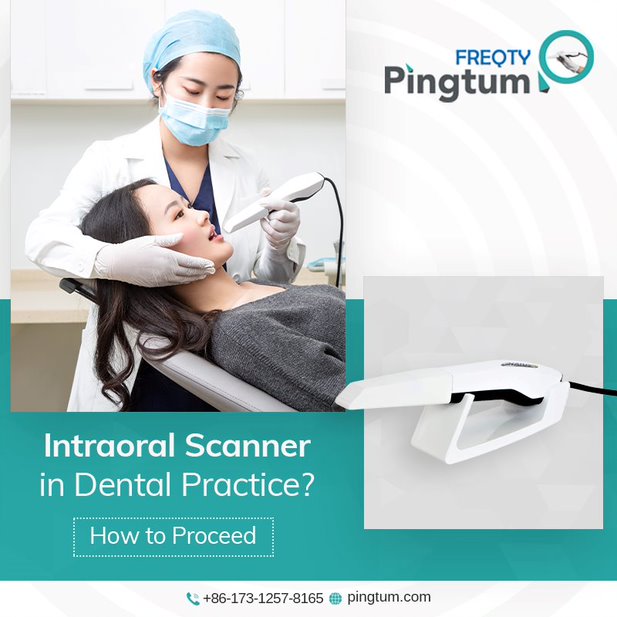
Digital dentistry comprising equipment like an intraoral scanner helps reduce risks associated with human factors. It provides accuracy, higher consistency, and precision at every step of the dental workflow. 3D scanning does away with many variables that are associated with traditional impressions and provides dentists with better and more accurate data to design the impression. The use of such digital equipment can be the best business choice for your dental clinic by improving efficiency and streamlining workflows. In a dental clinic, the use of any 3D scanner can mean shorter appointments, reduced chair time, increased throughput, and better patient satisfaction. Further, since the world of dentistry is going through a transformation of sorts, like other sectors, thanks to the infusion of technology, not adopting advanced digital equipment can mean falling behind the competition.
How to incorporate/implement a 3D intraoral scanner in your dental practice
Making a transition into digital dentistry needs to be done gradually to avoid any unnecessary risks. The steps to make it happen are as follows:
Choose an application: Begin with choosing an application that makes sense to your business. Consider a product or workflow that is currently unreliable, inefficient, or expensive. For your dental clinic, you may install an in-house scanner to cut lead times and costs. The scanner can help you with certain treatments like guided surgery. Choose any product or workflow and begin with a single-use case. Then extend the same to multiple applications while depending on laboratories to perform complex cases. An intraoral scanner installed in your clinic can lead to better patient experience, improved efficiency, time, and cost savings, and help you achieve precision and high-quality scanning.
Define a digital workflow: With a specific application, complete the step-by-step digital workflow, and understand the elements needed for scanning and designing. As a dental practitioner decide whether investing in an intraoral scanner is better than sending physical impressions or stone models to the lab. Get a demonstration of the equipment to understand its step-by-step functioning and how can it be placed in the clinical workflow.
Start small and then scale up: First get into a trial to understand the workflow, learn from each step, and sort out any issues. Once you are comfortable with the outcome, you may switch to a fully digital workflow and connect with the laboratory as well. Incorporating any new equipment in your dental workflow should not be a difficult decision as it is likely to generate long-term ROI. With an intraoral scanner, you can start small and see quicker returns on investment.
The workflow between clinic and lab: In a conventional dental workflow to get a crown or implant, the practice is to first take a physical impression of the patient’s tooth. Then the same is sent to a dental laboratory where necessary models or restorations are created. The lab then sends these models back to the dental clinic for actual use. However, with a digital scanner, these steps are done faster and the lab can create impressions using 3D printing.
Conclusion
An intraoral scanner has become the need of the hour for dental clinics to beat the competition, improve patient experience, and increase their bottom line. However, it should be incorporated into the workflow slowly and on a small scale only to be scaled up later.





